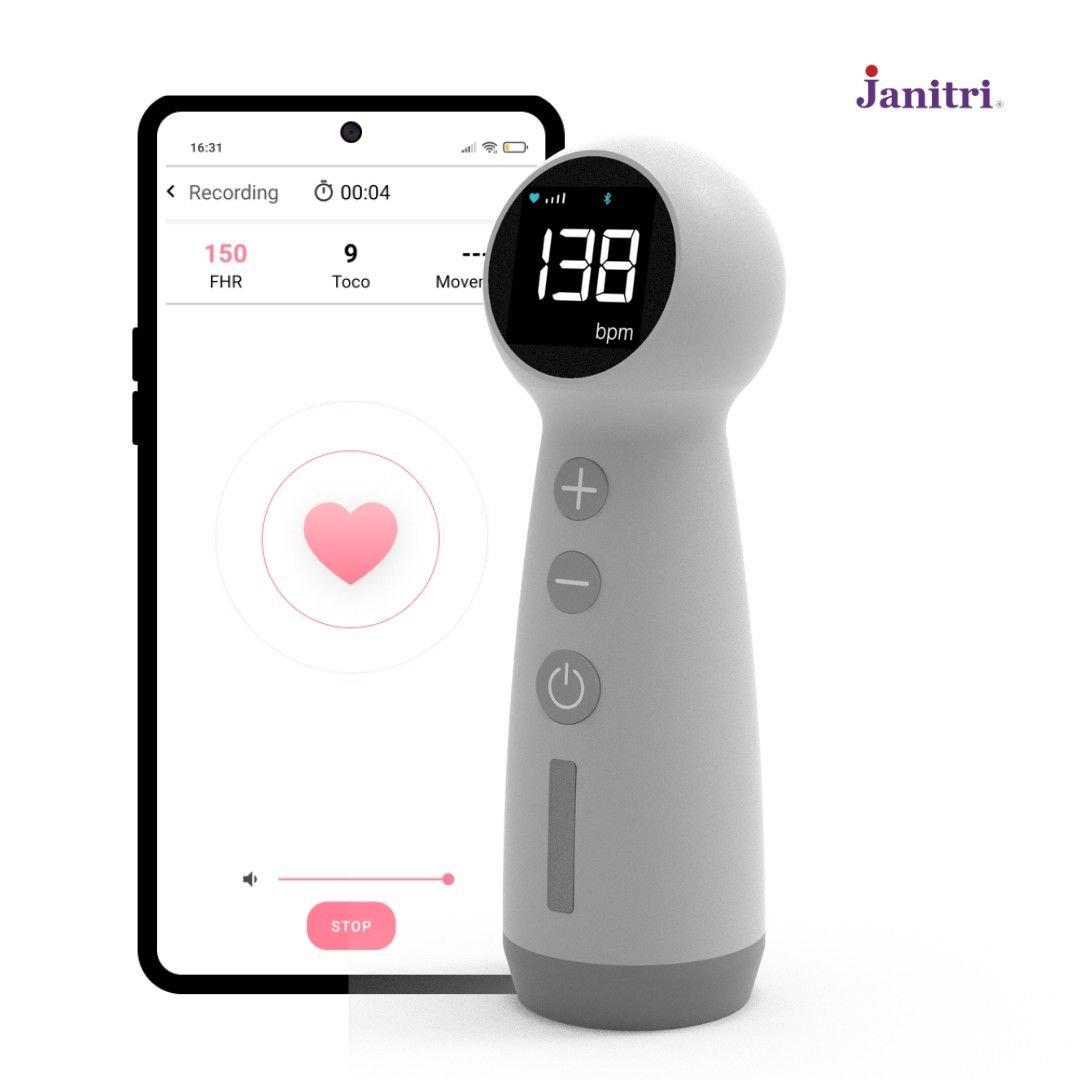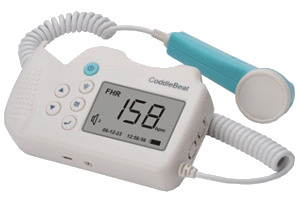Fetal dopplers have become a cornerstone of prenatal care, offering a safe and non-invasive method for detecting and monitoring a fetus’s heartbeat. B2B healthcare facilities seeking to optimize their prenatal offerings can leverage this comprehensive buying guide, meticulously crafted for global markets. Here, we delve into the intricacies of fetal dopplers, empowering you to make informed choices that align with your specific clinical needs and patient demographics.
Understanding Fetal Dopplers and their Applications
Fetal dopplers are handheld devices that emit high-frequency sound waves (ultrasound) and translate the reflected echoes into audible sounds, allowing healthcare professionals to detect the fetal heartbeat. They are primarily used for:
- Early pregnancy confirmation: Fetal dopplers can detect a fetal heartbeat as early as 6-8 weeks of gestation, aiding in early pregnancy confirmation and reassurance for expectant mothers experiencing anxiety.
- Fetal heart rate monitoring: Regular monitoring of the fetal heart rate (FHR) throughout pregnancy can provide valuable information about fetal well-being. Abnormal FHR patterns may warrant further investigation.
- Placental localization: Fetal dopplers can assist in locating the placenta, which is crucial for procedures like amniocentesis.
Key Considerations for B2B Buyers of Fetal Dopplers
- Probe Frequency: Fetal dopplers typically operate at frequencies between 2 MHz and 8 MHz. Lower frequencies penetrate deeper, making them suitable for later pregnancies with a thicker maternal abdominal wall. Higher frequencies offer better resolution for earlier detection in the first trimester. Consider a variety of probe frequencies to cater to different gestational stages.
- Doppler Mode: Select fetal dopplers with either continuous wave (CW) or pulsed wave (PW) modes. CW mode provides a constant audible sound representing overall fetal and maternal blood flow. PW mode offers intermittent beeps corresponding specifically to the fetal heartbeat, improving accuracy for FHR detection, particularly in early pregnancy. Some models offer both modes for versatility.
- Display and Audio Output: Prioritize fetal dopplers with clear and easy-to-read digital displays for FHR visualization. Adjustable volume controls and built-in speakers or headphone jacks ensure optimal audio output for both healthcare professionals and expectant mothers.
- Portability and Ergonomics: Consider the weight and size of the fetal doppler for enhanced portability during home visits or limited-resource settings. Choose ergonomic designs with comfortable grips to minimize user fatigue during extended examinations.
- Safety and Regulatory Compliance: Ensure the chosen fetal dopplers comply with relevant safety standards in your geographical location. Research regulatory bodies like the FDA (US), CE marking (Europe), and CFDA (China) for specific requirements concerning ultrasound output levels.
- Durability and Cost-Effectiveness: Evaluate the build quality and consider warranty options for long-term durability. Explore cost-effective options that balance features with affordability, particularly for high-volume clinics or resource-constrained settings.
Types Of Fetal Doppler
- Continuous Wave (CW) Doppler: CW dopplers emit a constant ultrasound wave and translate the reflected echoes into a continuous audible sound. This sound represents a combination of fetal and maternal blood flow. CW dopplers are generally more affordable and simpler to operate compared to pulsed wave (PW) dopplers. They can detect fetal heartbeats earlier in pregnancy (around 6-8 weeks) due to their continuous signal.
- Pulsed Wave (PW) Doppler: PW dopplers emit short bursts of ultrasound waves and analyze the reflected echoes during the intervals between these bursts. This allows for differentiation between fetal and maternal blood flow based on the differing velocities. PW dopplers provide a more precise measurement of the fetal heart rate (FHR) by isolating the fetal heartbeat from the background maternal blood flow sounds. This is particularly beneficial in early pregnancy and for women with a thicker abdominal wall.
Additional Considerations for Global B2B Buyers:
Some fetal dopplers offer both CW and PW modes, providing versatility for different scenarios. Doppler technology is constantly evolving. Newer models may incorporate features like digital displays for visualizing the FHR and improved audio quality for clearer sound output.
- Language Support: For facilities catering to diverse patient populations, consider fetal dopplers with multilingual user manuals and display options to enhance communication and patient understanding.
- Training and Support: Prioritize manufacturers with readily available training resources and technical support for healthcare professionals to ensure proper use and troubleshooting of fetal dopplers
Leading Fetal Doppler Manufacturers
Janitri Innovations Private Limited
The Keyar ECHO Smart Handheld Fetal Doppler, crafted by Janitri Innovations Private Limited, stands as a pinnacle of fetal health monitoring technology. This cutting-edge device is specifically designed for expectant parents to monitor their baby’s heartbeat with accuracy and ease. Lightweight and portable, the Keyar ECHO can be used comfortably at home or on the go, ensuring continuous monitoring wherever you are.
This fetal doppler utilizes advanced Bluetooth connectivity, seamlessly pairing with smartphones or tablets. This feature enables real-time monitoring of the baby’s heartbeat, offering flexibility and convenience to move freely while staying connected to the baby’s well-being. The wireless nature of the device underscores its user-friendly design, making it an indispensable tool for modern prenatal care.
Maestros Electronics & Telecommunications Systems Limited
The CoddleBeat, manufactured by Maestros Electronics & Telecommunications Systems Limited from India, exemplifies advanced medical technology for fetal monitoring. Designed with over 20 years of expertise, this device features a high-sensitive transducer and an ergonomic, compact, and lightweight design. The CoddleBeat ensures continuous operation with its inbuilt rechargeable Li-ion battery, making it a reliable tool for expectant parents and healthcare professionals.
The CoddleBeat stands out with its LCD display and backlight, providing clear and easy-to-read information. This feature enhances usability in various lighting conditions, ensuring accurate monitoring of the fetal heartbeat. Maestros Electronics & Telecommunications Systems Limited, known for their high-quality diagnostic and critical care equipment, integrates their extensive experience into the CoddleBeat, offering a product that meets the stringent needs of modern obstetrics and gynecology.
Selecting the right fetal dopplers for your B2B healthcare facility requires careful consideration of various factors impacting functionality, user experience, and regulatory compliance. This buying guide has equipped you with the knowledge to navigate the fetal doppler landscape and make informed choices that prioritize patient well-being, operational efficiency, and cost-effectiveness. Remember, ongoing research and technological advancements are constantly evolving the field of fetal dopplers. Staying updated on these developments and maintaining open communication with medical professionals allows you to continuously optimize your prenatal care offerings.
Disclaimer: This buying guide provides general information and should not replace professional advice and guidance.


